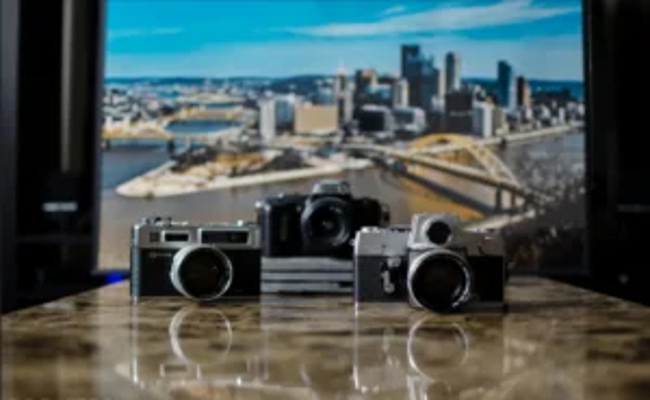Basdalm Separation on Images: A Comprehensive Guide to Enhancing Image Processing
Mastering Basdalm Separation on Images for Optimal Image Clarity and Data Extraction

Basdalm Separation on images is a powerful technique used to enhance the clarity and processing efficiency of image data. By separating various components within an image, this method allows for more precise analysis, identification, and classification of visual elements. It is especially valuable in fields like remote sensing, medical imaging, and photography, where distinguishing between distinct layers or elements in an image is crucial for accurate data interpretation. This guide explores the intricacies of Basdalm Separation, its applications, and how it enhances image processing capabilities.
Introduction to Basdalm Separation
Basdalm Separation on images refers to a technique used to isolate distinct layers or components within an image. Whether in grayscale, color, or multi-dimensional formats, images contain a wealth of information that can be categorized into specific layers or parts. Basdalm Separation simplifies the process of distinguishing these parts for better analysis and application in various industries.
The Science Behind Basdalm Separation
At its core, Basdalm Separation works by applying mathematical models and algorithms to decompose an image into its various elements. For example, in remote sensing, satellite images may contain different types of land cover—such as water bodies, vegetation, or urban areas—that need to be identified and studied separately. Similarly, in medical imaging, separating various tissue types from an MRI scan can provide a more detailed understanding of a patient’s health.
By separating these layers or components, researchers and professionals can focus on specific elements without being distracted by extraneous data. The separation is often done using techniques like Independent Component Analysis (ICA), Principal Component Analysis (PCA), or other advanced image-processing algorithms.
Applications of Basdalm Separation
Remote Sensing: Basdalm Separation is widely used in remote sensing to differentiate between various land types, vegetation, and water bodies in satellite imagery. This technique helps in monitoring deforestation, urban expansion, and climate change by isolating specific geographical features for detailed study.
Medical Imaging: In medical fields like radiology and oncology, separating different tissue types in MRI or CT scans is critical for diagnosis and treatment planning. Basdalm Separation enhances the clarity of these images, allowing doctors to see beyond the noise and focus on the critical details.
Photography and Image Enhancement: Photographers often use Basdalm Separation to enhance images by separating the foreground from the background. This process allows for more precise editing, improving the overall aesthetic appeal of the photo.
Security and Surveillance: In security systems, especially those involving facial recognition or object detection, Basdalm Separation improves accuracy by isolating important features, such as facial landmarks or specific objects in a crowded environment.
Astronomy: Astronomers use Basdalm Separation to analyze astronomical images, helping them distinguish between stars, planets, and other celestial objects in space.
How Basdalm Separation Works
The process of Basdalm Separation on images generally follows these steps:
Preprocessing: The image undergoes initial processing to reduce noise and enhance clarity. Techniques like histogram equalization, contrast adjustment, and filtering are commonly used during this stage.
Decomposition: The image is decomposed into its basic components, typically using techniques like PCA or ICA. These methods break the image into its most relevant parts, reducing complexity and allowing for easier analysis.
Segmentation: After decomposition, the image is segmented into different regions or layers. Each segment represents a distinct part of the image, such as the foreground, background, or specific objects.
Analysis and Reconstruction: The segmented layers are then analyzed individually, allowing for targeted modifications, such as enhancing certain features or isolating specific objects. If necessary, the layers can be reconstructed into a final image that emphasizes the desired components.
Techniques Used in Basdalm Separation
There are various methods used to achieve Basdalm Separation, each with its strengths and weaknesses depending on the type of image and the intended application:
Principal Component Analysis (PCA): PCA reduces the dimensionality of the image data while retaining the most important features. It is commonly used in remote sensing and medical imaging to separate layers based on variance.
Independent Component Analysis (ICA): ICA separates the image into independent components, which can be useful when dealing with overlapping signals in an image. It is often employed in fields like neuroscience and signal processing.
Wavelet Transform: The wavelet transform is a powerful tool for multi-resolution image analysis. It allows for the separation of an image into different frequency components, making it easier to isolate details at various scales.
Fourier Transform: The Fourier Transform separates an image into its frequency components, making it useful for analyzing repetitive patterns and structures within the image.
Clustering Algorithms: Techniques like k-means clustering or Gaussian Mixture Models (GMM) group pixels with similar characteristics together, making it easier to segment the image into distinct parts.
Challenges and Limitations
Despite its numerous advantages, Basdalm Separation is not without its challenges. Some of the common issues include:
Complexity of Images: Highly complex images with overlapping elements can make separation difficult. Advanced algorithms are often required to achieve accurate results in such cases.
Noise and Artifacts: Noise in an image can interfere with the separation process, leading to inaccurate segmentation. Preprocessing techniques are often necessary to mitigate this issue.
Computational Resources: Basdalm Separation, especially on large images or video streams, can be computationally intensive. The need for high processing power and memory is a common limitation in real-time applications.
Interpretation of Results: While the separation process itself can be straightforward, interpreting the results requires domain expertise. For example, in medical imaging, a doctor must be able to correctly identify tissue types from a separated image.
Future Trends in Basdalm Separation
As technology continues to advance, Basdalm Separation is expected to play an even greater role in various industries. Future trends include:
AI and Machine Learning Integration: With the rise of AI, machine learning models are increasingly being used to automate the Basdalm Separation process. These models can learn from large datasets, improving the accuracy and speed of image separation.
Real-Time Processing: As computational power improves, real-time Basdalm Separation will become more feasible, especially in fields like security and surveillance, where immediate analysis is crucial.
Enhanced Medical Imaging: In healthcare, Basdalm Separation techniques are being refined to provide even clearer images for diagnostics. This is particularly important in early detection of diseases like cancer, where precise imaging can make a significant difference in treatment outcomes.
Conclusion
Basdalm Separation on images is a vital tool in modern image processing, offering significant benefits in a variety of fields, from remote sensing and medical imaging to photography and security. By understanding the intricacies of this technique and the various methods used to achieve separation, professionals can enhance their ability to extract meaningful data from complex images. As advancements in AI and computational power continue, Basdalm Separation will become even more integral to image analysis and processing, driving innovation in both scientific and commercial applications.


